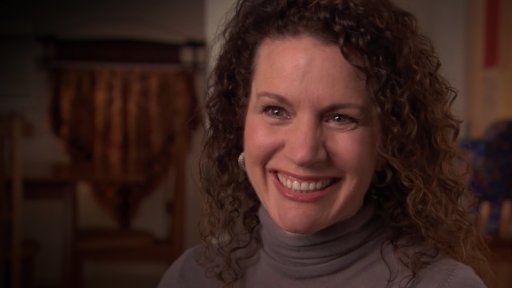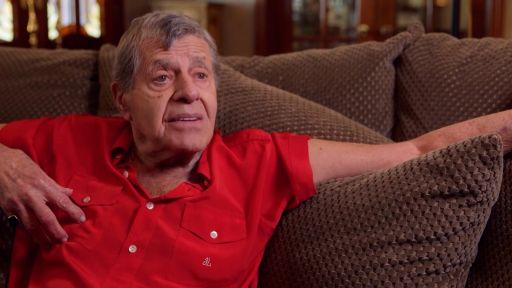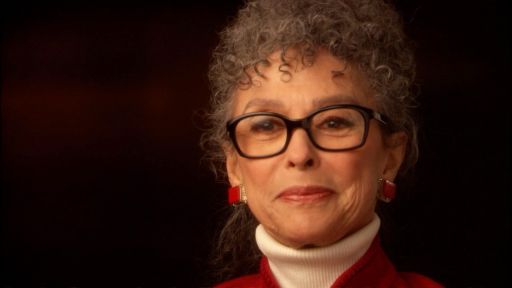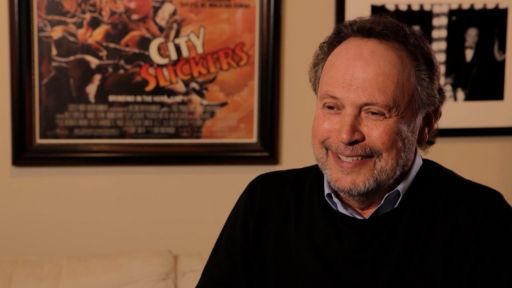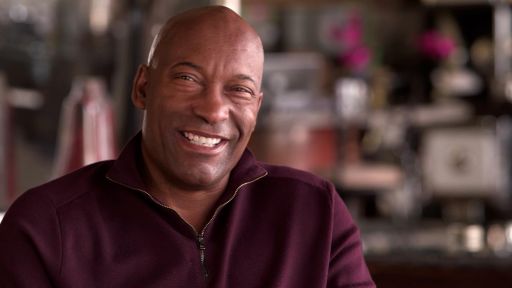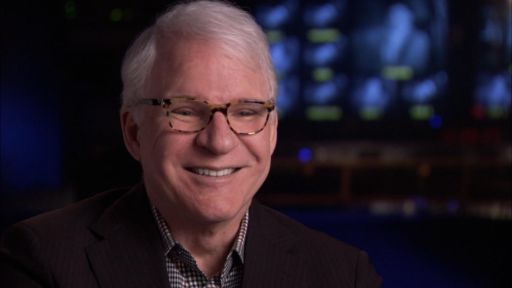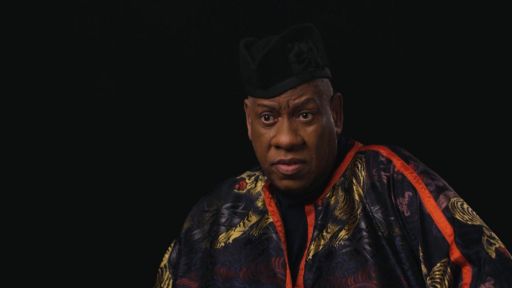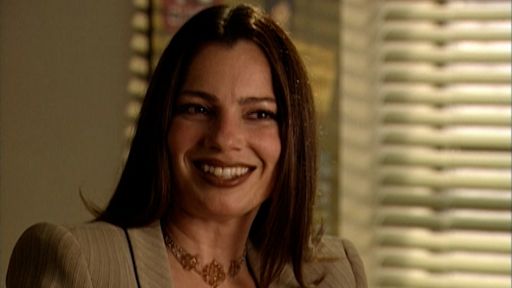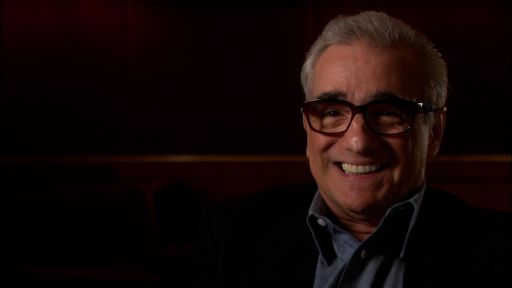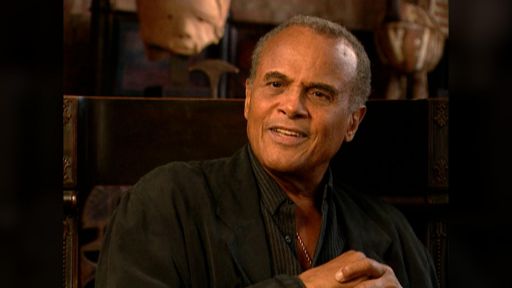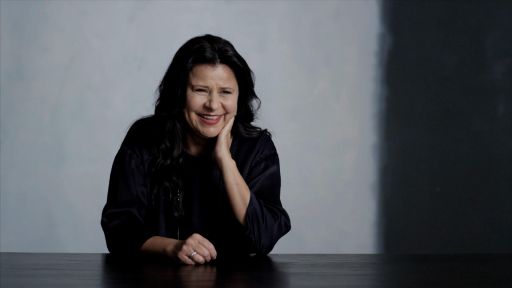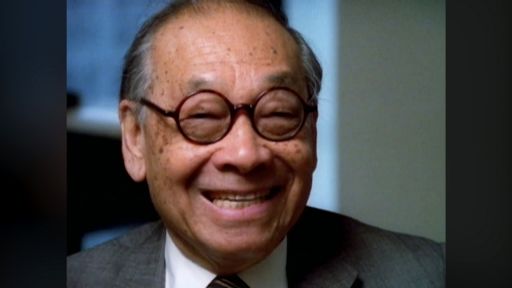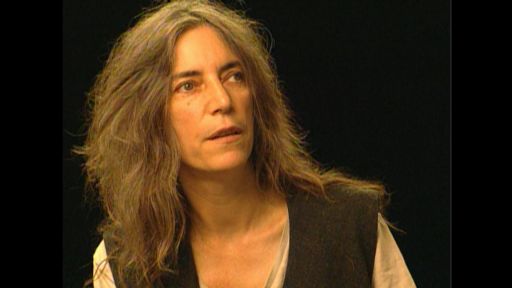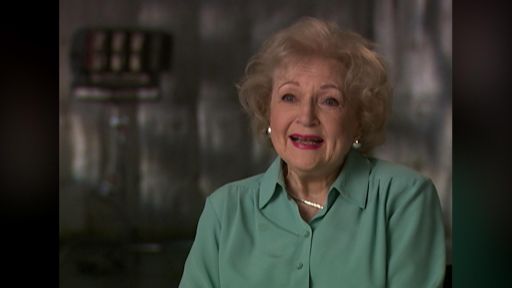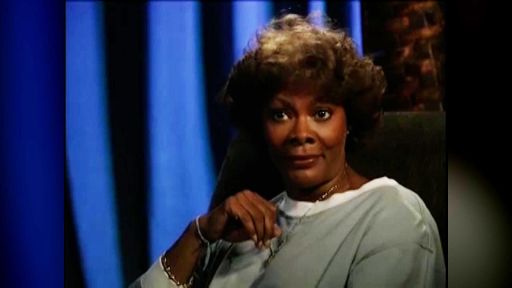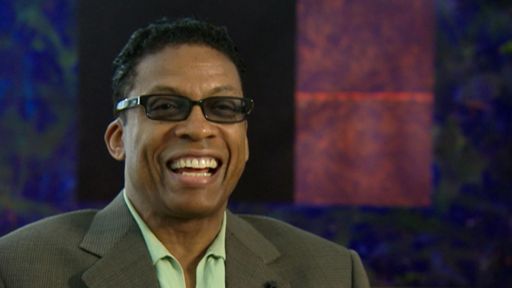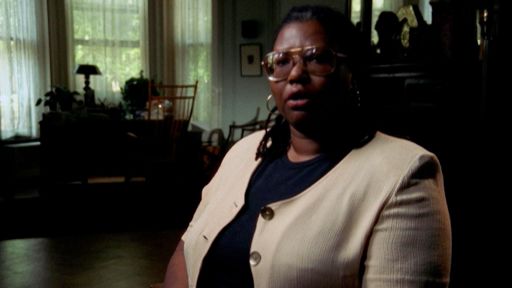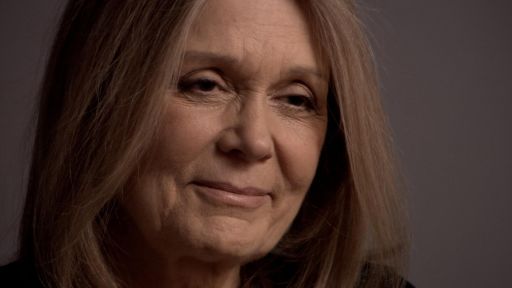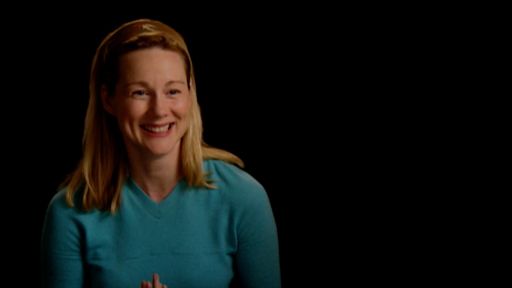TRANSCRIPT
- [Cameraman] That's great.
Look, the hat's wonderful.
Is the hat a problem for us?
- [Man] I don't know.
- [Woman] The hat's not- - No, no, no, no, no.
No, they're good.
Any good filmmaker or video maker should be able to go around that problem.
- [Cameraman] I think so.
(laughs) - [Man] I agree.
- Between 1960 and 70, I ran Filmmakers CinemaTech and Filmmakers Cooperative, and those were very busy places for the sixties New York art scene and that of course included filmmakers and musicians and painters, et cetera.
And so, that's where I met everybody, that's including Lou Reed.
It was at Park, main center of the activity was 414 Park Avenue South, corner of 28th Street, which was my loft.
And everybody every evening, everybody was there from Salvador Dali to Andy Warhol, to just name anybody.
It was a very busy, exciting period.
The theater itself was sort of one step down on the level down, and there were about 200 some seats.
It was practically always filled.
You know, I couldn't do it, (laughs) get 200 seat theater full today for something like that.
But maybe it was, when something just comes into existence and everybody is excited about it.
It was very often.
The place was full, and everybody was excited.
But the films, I do not exactly recall to what films, "Velvet Underground" or "Plastic Inevitable", you know play it.
But I would say, that I know that included my own films that one would not even suspect like a film "The Brick" but she played it.
The Barbara Rubin projected them all with no sound and then you could not hear the sound of the film under the music.
So it was a lot of superior impositions.
It was just a huge collage and montage of images with the sound in the background.
But there was this energy, there was this energy in the music that, and I wrote, I think in the "Village Voice", that it was not like anything else.
Like you could feel that there is something new in music coming into existence.
New sounds, new energy.
Filmmakers took over my loft.
I was sleeping under my moviola and they took over every night.
They were projecting the new footage.
Everybody came and for months and months.
And then one day somebody said, "Today is Andy's birthday.
Come and meet Andy, and Andy will be there."
"Andy?
Andy will be there?"
"You know Andy."
I just said, "I don't know Andy."
"You don't know Andy?
He has been watching movies in your loft for months sitting there on the floor and you don't know Andy?"
"I don't know.
"All kinds of people come to my loft.
"I don't know who Andy is."
Of course, I went and I met Andy, and then I recognized this guy was sitting on the floor and watching all those movies where Ron Rice and Jack Smith, in this footage that was just taken a day before and he was there.
That was his schooling.
That was his learning.
And then, he decided one day that he will make movies also because he became friends with all the filmmakers, showing their footage there, and then that was his beginning.
I was running a Gramercy on 28th Street, Gramercy Arts film screenings I had in the Gramercy Arts Theater between Park and Lexington and 28th.
And he comes one day and says, "Here, "you want to, "you can have a new ser- "At the beginning of every program, "I will bring you "a little short film "like two minutes and 45, "but project slow speed," and that was this series of kisses, so that was in '63, '64, somewhere there.
And then later, he came with "The Sleep" which premiered there.
And I tied, everybody said that nobody will stay for six hours.
So I got there, I tied Andy to the chair (laughs) and I had seen the film before.
And I come back an hour later, and he escaped.
(laughs) You see, Andy's "The Factory" was like a huge psychiatrist couch in which everybody from everywhere came, all the lost and sad souls and some very normal people, but mostly those who were semi-lost came in.
And he was always, he said, "Yes, okay, yes, yes, yes."
He was like a good father who never said no.
So everybody liked, everybody felt very good there because you could say and do anything.
And he said "Yes, good, good," because that was Andy and that.
So I think he said, you know in the newspapers you read that some jumped from the roofs and they wouldn't have jumped from the roofs anyway.
But I think that he saved, helped a lot of people.
He was a psychiatrist in a way.
It was a kitchen in which, which brew, everybody was allowed to express themselves and do so many things.
Things came, were born there, came into existence because of this very permissive atmosphere.
It was quite amazing.
Andy, he began with silent films that ran for a long time.
Very slow, not moved, but then he went into the sound.
And when he went into the sound, he had seen all those lost, desperate souls in the factory.
He put them in front of the camera, and now do whatever he want, what their situations there.
And what happened is that like every, I wrote in the Voice, in the Village Voice at that time, that everybody says that and even I said, I wrote it, "In 10-20 years, everybody will be making films like this."
Because so easy, you know.
Just put people, camera runs by itself.
Run it for hours and portraits of films.
It did not happen.
It did not happen.
And why?
Because he recorded, Andy recorded a world that is not like any other and those films are like anthropological documents today of a certain sensibility.
They cannot be repeated, cannot be recreated, cannot be repeated.
Same as Eisenstein's films cannot be repeated, recreated by somebody else, or Hitchcock's or any name, any great filmmaker, because it's a very specific, closed, almost reality.
It's like a document, a slice of a period, and that's where, you know, you can watch those people, their conversations clashing.
And that's where, you know, it was the world that knew and I also fit like somehow they were, he was friends with everybody there and later when it moved to the Kansas City.
What was it called?
- [Cameraman] Max's- - Max's.
But yes, and Lou was there but he was like on the side.
Lou was never really in the middle like at Max's Kansas City.
He was very often on the side there, brooding, very brooding us.
You know, spent many hours with him but we did not have really much conversations because you know I'm a silent person and she's a silent, brooding person.
I'm a shy.
He's brooding.
And so, I cannot tell much about what we discussed but he was always there.
He was always there.
- [Man] The screen test that Andy did, which we're gonna use some of them in the film.
Can you set the context for that?
- It was- - [Man] Or just tell us how important those are today or.
- The screen tests, the series of screen tests, which I think go into like four hundreds or something like that are incredible documents.
You walked into the factory and the camera is there, the Bolex is there, motorized Bolex that ran for two minutes, 45 seconds.
And usually, the lean and short Malanga, Gerard Malanga was there too.
(indistinct) The chair set and look and do whatever you want.
It's there and the camera runs for two minutes, 45 seconds.
And later of course, the instructions from Andy was always to project them slower speed.
So it runs about three minutes and a half instead of naturalistic speed, 24 frames per second.
It runs much slower which then destroys the naturalism.
It then puts it in a much on a completely different plane, out of the real context.
It becomes a portrait.
And those 400, they're still haven't been seen exhibited but I think it's a very unique treasury of the various personalities, not on the artists.
You know, anybody who was passing the the town, coming to interview, or there are many students admirers coming.
So just, you know, and portraits were taken.
It's terrific.
- [Man] Jonas, did you do a screen test?
- Yes, yes, there was.
- [Man] Can you tell us about yours?
And you have it?
- No, I mean all the, there was a book that Gerard Malanga prepared and in the book maybe there are about 50 or 60 portraits.
So you can see my, that is one frame taken from the film and you can see my frame, because usually that one frame represents quite truly what is in the rest because people did not move much around.
So what you see in one frame, more or less the expression changes, some get impatient, some begin to react to the camera.
Yes, the portrait was taken of me also and...
But all the portraits are now with the Warhol Museum, some are with Malanga.
I understand.
- [Man] Okay, any other question that we need covered?
I think it's great.
- Anything?
I can answer any question.
(crew laughing in background) - [Man] You did wonderfully.
I would like to do- - [Woman] Do you know Lou's music to a certain extent that you could talk?
People have said that it has a rather cinematic quality to it, that it plays out almost as a novel or a film might.
- I think that if one would say that, I mean I have used some of Velvet Underground music as background for some of my films.
Now, it's very easy to use it because the music, at least some of the early music and even the later, it goes like on a certain plane which like makes a background, against which then you can put any images you want with the occasional changes on some exciting little moments that creates the rhythm there.
Which again goes with... You can...
It goes very well with, not with narrative films, but with any series of non-narrative disconnected images.
And that is why at the dome, Andy was always there at the dome in the back upstairs with three-four projectors, throwing different images, and they all went very well with that music.
That music somehow tied them all, those images together.
- [Woman] What attracted Andy to film?
- It's like this, I had a loft at 414 Park Avenue South, that's where Filmmakers Cooperative was and we screened.
Now I have to say something about Barbara Rubin because Barbara Rubin's name usually is like neglected in reviews of the sixties, that she was one of the seminal figures.
Actually, it was Barbara Rubin who introduced me to Velvet Underground, to Lou Reed.
It was Barbara Rubin who introduced Lou and Velvet Underground later to Andy Warhol, and Barbara Rubin was behind everything that was taking place during that period.
She was very much with it, very much in music, very much excited.
And like a mother of everything, always trying to help and push.
That included, you know Dylan, she practically was the nurse, Dylan's nurse after the motorcycle crash and Dylan of course acknowledges that.
So it was very active and I was running a movie from Lafayette to 41st Street in the middle of Times Square, practically between Sixth Avenue and Seventh Avenue, and that's where I ran films and that's where Barbara Rubin brought Lou and the group.
They were sort of experimenting, fooling around, sometimes background to some films and sometimes just playing there.
That is where they're trying out like period before the appearance and the dome took place.
And that's where Andy, Barbara Rubin brought Andy and said, "You have to see them.
You have to see.
You have to listen to them," and she introduced Andy to Lou and to the group.
- [Man] And the Velvets actually performed background music for films for at the CinemaTech in 65 for- - Yes, they played- - [Man] Jack Smith, Ron Rice, Warhol, Rubin, Stan Bracket.
Is that right?
- Right, because Barbara Rubin organized a series of screenings where she projected very often film on top of one film on top of another film and with music in the background.
So, and the place of course was called Filmmakers CinemaTech.
Yes, Jack Smith was there and Andy was there, then Ron Rice and Pierre- A lot of films where, that we are recognized now as classic sort of, had their first presentations with very excited audience seeing something for the first time.
I mean I have used some of Velvet Underground music as background for some of my films.
Now, it's very easy to use it because the music at least some of the early music and even the later, it goes a like on a certain plane, and then which like makes a background and then which then you can put any images you want with the occasional changes on some exciting little moments that creates the rhythm, which again goes with... You can...
It goes very well with, not with narrative films, but with any series of non-narrative disconnected images.
That is why the dome, Andy was always there at the dome in the back upstairs with three-four projectors, throwing different images and they all went very well with that music.
That music somehow tied them all, those images together.
- [Woman] Do you remember the Psychiatrist Convention?
- Yes, yes, very much.
I was the one who introduced Andy and Velvet Underground.
- [Man] Start over and tell us about the Psychiatrist Convention.
- I dunno how it came, but it was the first real...
It was the first sort of public appearance of that's how it's taken, of Velvet Underground, and it was at the yearly Psychiatrist Convention which was somewhere in the Fourth.
I think Park Avenue or Madison in the 45th Street somewhere, some big hotel.
There were like, I dunno 400-500 psychiatrists there.
And then, we needed something special and I know whose idea it was.
I said, "Oh, okay Andy and let's him bring his friends and music," and then decided to do that.
Andy asked me to introduce him and Velvet Underground and I did, and there is some pictures of it.
I filmed a little bit of that occasion and they did their... Of course, performed and Malanga was strutting there (laughs) and everybody was very excited for the psych- The head of the convention was beaming.
There is a picture with Andy and sort of very happy about the occasion.
- [Man] It was reviewed very unfavorably, I think right?
- [Woman] In the social column.
- Yes.
- [Man] It was terrible.
But are you saying the people there enjoyed it?
- Yes, they were talking loud, They enjoyed it.
But I think for the, maybe the- The press was there.
The press was already following Andy and the activities quite closely.
And one of the reasons was that we refused at that time... Now, if the press and newspaper magazine calls, everybody's very cooperative.
We were not cooperative, for myself or the Filmmakers Cooperative, CinemaTech.
If Time or Life Magazine calls and wanted to see something that you have to pay.
You have to pay.
We are not cooperating, and that excited them very much.
(laughs) So in any case they were there and I guess they were not used yet to the music.
They thought the situation psychiatrist and this strange music here.
I don't remember, maybe I read those columns but I don't remember what they said, the columnists.
But it was a exciting period, so many things happened there and we did not pay... We did not take any of it seriously.
You know, we just did and we did not document it because it's life.
We are just doing it.
If we would have known that it would, will be so much known later and everybody will be making television programs about it, we would have documented it and footage of it, but it was life.
It was life, and you don't think that's- When you live, you don't record.
You don't document real life.
You just live it.
So we lived.

